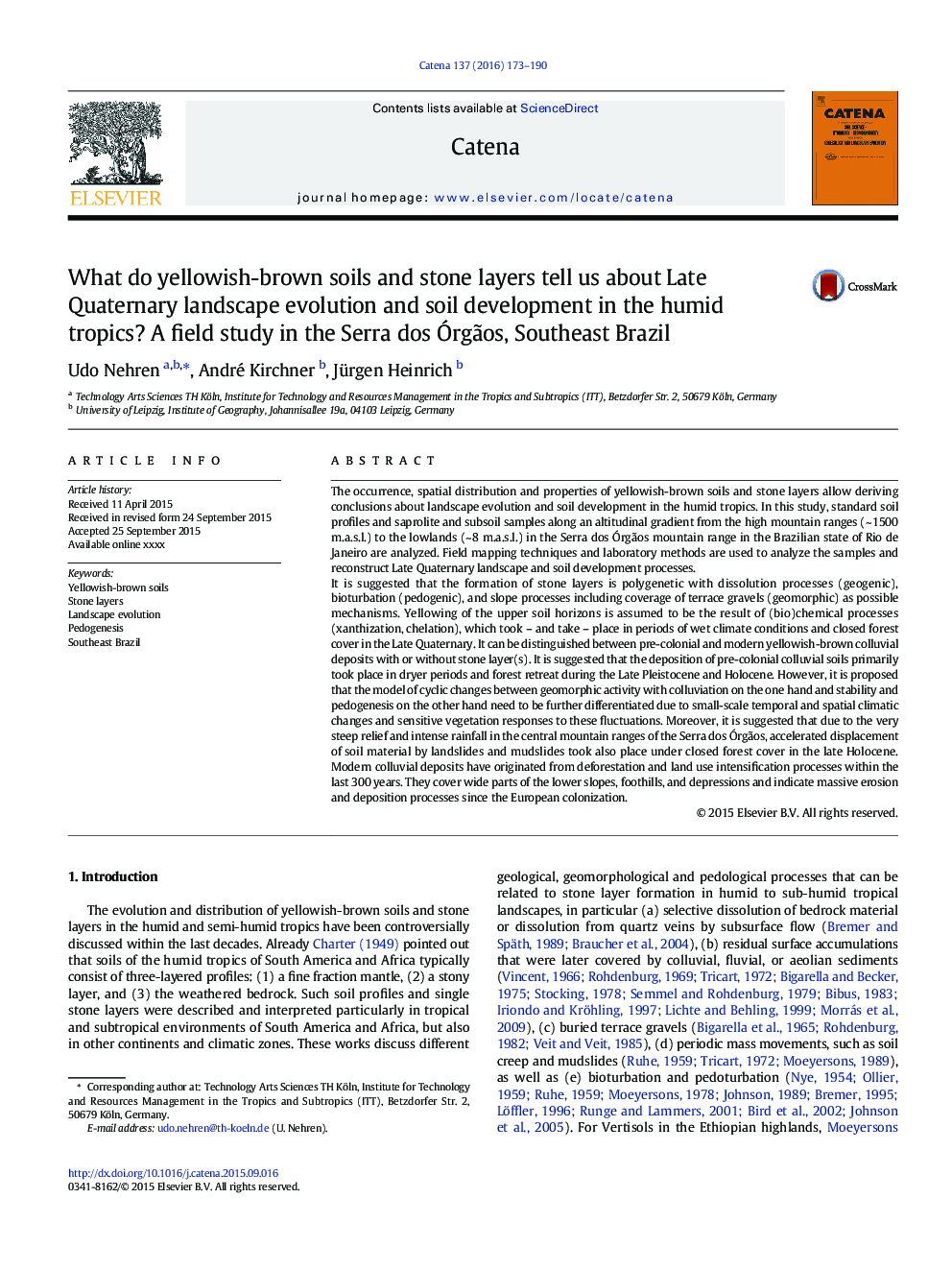| کد مقاله | کد نشریه | سال انتشار | مقاله انگلیسی | نسخه تمام متن |
|---|---|---|---|---|
| 6407952 | 1629215 | 2016 | 18 صفحه PDF | دانلود رایگان |
عنوان انگلیسی مقاله ISI
What do yellowish-brown soils and stone layers tell us about Late Quaternary landscape evolution and soil development in the humid tropics? A field study in the Serra dos Ãrgãos, Southeast Brazil
دانلود مقاله + سفارش ترجمه
دانلود مقاله ISI انگلیسی
رایگان برای ایرانیان
کلمات کلیدی
موضوعات مرتبط
مهندسی و علوم پایه
علوم زمین و سیارات
فرآیندهای سطح زمین
پیش نمایش صفحه اول مقاله

چکیده انگلیسی
It is suggested that the formation of stone layers is polygenetic with dissolution processes (geogenic), bioturbation (pedogenic), and slope processes including coverage of terrace gravels (geomorphic) as possible mechanisms. Yellowing of the upper soil horizons is assumed to be the result of (bio)chemical processes (xanthization, chelation), which took - and take - place in periods of wet climate conditions and closed forest cover in the Late Quaternary. It can be distinguished between pre-colonial and modern yellowish-brown colluvial deposits with or without stone layer(s). It is suggested that the deposition of pre-colonial colluvial soils primarily took place in dryer periods and forest retreat during the Late Pleistocene and Holocene. However, it is proposed that the model of cyclic changes between geomorphic activity with colluviation on the one hand and stability and pedogenesis on the other hand need to be further differentiated due to small-scale temporal and spatial climatic changes and sensitive vegetation responses to these fluctuations. Moreover, it is suggested that due to the very steep relief and intense rainfall in the central mountain ranges of the Serra dos Ãrgãos, accelerated displacement of soil material by landslides and mudslides took also place under closed forest cover in the late Holocene. Modern colluvial deposits have originated from deforestation and land use intensification processes within the last 300 years. They cover wide parts of the lower slopes, foothills, and depressions and indicate massive erosion and deposition processes since the European colonization.
ناشر
Database: Elsevier - ScienceDirect (ساینس دایرکت)
Journal: CATENA - Volume 137, February 2016, Pages 173-190
Journal: CATENA - Volume 137, February 2016, Pages 173-190
نویسندگان
Udo Nehren, André Kirchner, Jürgen Heinrich,